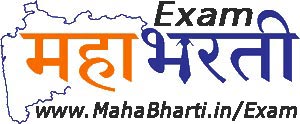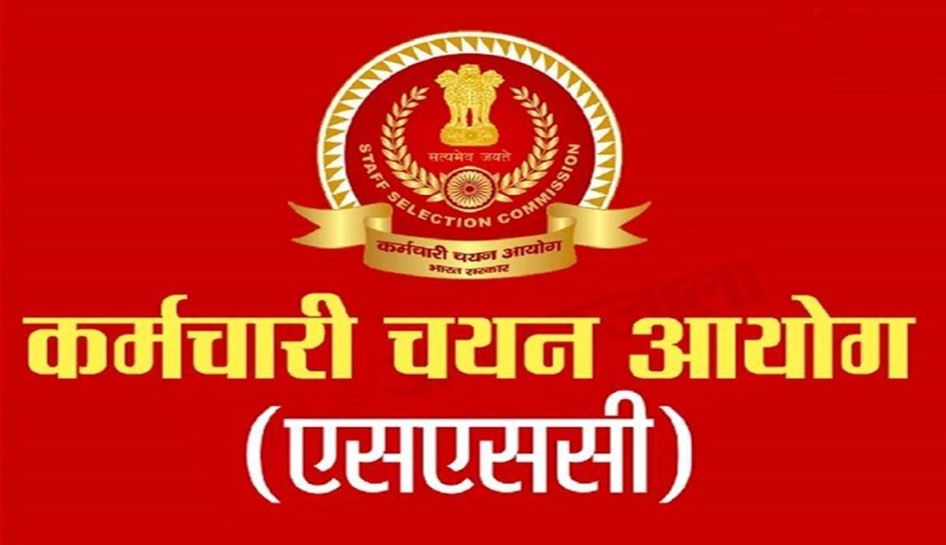SSC Scientific Assistant IMD Syllabus and Exam Pattern PDF
SSC Scientific Assistant IMD Syllabus and Exam Pattern PDF – Its a dream for each student to get work in the Indian Government. Day By Day there is tough competition amongst candidates regarding Government Exams. All year candidates search for various Govt exams, this year Staff Selection commission has published many vacancies for various Posts like CGL, Stenographer, JE and Other Exam. Likewise SSC has announced 990 vacancies new Notification for Scientific Assistant in India Meteorological Department (IMD), Group ‘B’. SSC has also announced exam date which is December, 2023 (Tentative). For this Students who are new to this exam must Know SSC Scientific Assistant Exam Pattern 2023, SSC Scientific Assistant Syllabus as well. We are here to provide you Brief regarding SSC Scientific Assistant IMD Syllabus and Exam Pattern PDF . Download SSC Scientific Assistant IMD Syllabus and Exam Pattern in hindi as well from below Link :
 Staff Selection Exam Details in Marathi – Syllabus For All SSC Posts
Staff Selection Exam Details in Marathi – Syllabus For All SSC Posts
SSC Scientific Assistant IMD Syllabus and Exam Pattern in hindi| SSC Scientific Assistant Bharti Exam Pattern And Syllabus
कर्मचारी निवड आयोगाने 30 सप्टेंबर 2022 रोजी वैज्ञानिक सहाय्यक IMD भरती 2023 साठी अधिकृत वेबसाइटवर 990 रिक्त पदांच्या भरतीसाठी अधिकृत अधिसूचना प्रकाशित केली आहे. एसएससी वैज्ञानिक सहाय्यक भारतीय हवामान विभागाच्या परीक्षेची वाट पाहणारे सर्व अर्जदार ३० सप्टेंबर २०२२ ते १८ ऑक्टोबर २०२२ दरम्यान अर्ज करू शकतात. सुरुवातीला, तयारी करणाऱ्या उमेदवारांना परीक्षेची पद्धत आणि अभ्यासक्रमाची माहिती असणे आवश्यक आहे. अधिसूचना अधिकृतपणे आल्यामुळे, आम्ही SSC वैज्ञानिक सहाय्यक IMD अभ्यासक्रम 2022 बद्दल तपशीलवार माहिती प्रदान केली आहे. येथे तुम्ही SSC वैज्ञानिक सहाय्यक IMD अभ्यासक्रम 2023 आणि SSC वैज्ञानिक सहाय्यक परीक्षा नमुना 2023 तपासू शकता.
Note that this an Old Syllabus in year 2022… As soon as New Notification is Out we will Update here !!
SSC IMD Scientific Assistant Bharti Important Dates
| Event | Date |
|---|---|
| Apply Start | September 30, 2022 |
| Last Date to Apply | October 18, 2022 (11:00 pm) |
| Exam Date | 14-16 December 2022 |
| Admit Card | 4 Days Before Exam Date |
SSC IMD Scientific Assistant Selection Process
लेखी परीक्षा दोन तास चालते आणि त्यात 200 प्रश्न असतात. प्रश्नपत्रिका भाग I आणि भाग II अशा दोन भागात विभागली आहे.
- परीक्षा ऑनलाइन होणार आहे.
- भाग I मधील प्रत्येक विभागात 25 प्रश्न आहेत, प्रत्येक प्रश्न एक गुणाचे आहे.
- भाग 2 मध्ये एकूण 100 गुणांचे 100 प्रश्न आहेत.
- प्रत्येक चुकीच्या उत्तरासाठी 0.25 गुण वजा केले जातील.
- दोन्ही भागांना एकूण दोन तास लागतील.
SSC IMD Scientific Assistant Bharti Exam Pattern
| Papers | Subject | No. of questions | Duration & Timings |
| Part-I Computer based Examination | (i) General Intelligence & Reasoning
(ii) Quantitative Aptitude
(iii) English language & Comprehension
(iv) General Awareness |
25
25
25
25
|
120 Minutes (Total) |
| Part-II Computer based Examination | Physics / Computer Science & Information Technology / Electronics & Telecommunication Engineering | 100 |
SSC Scientific Assistant IMD Syllabus 2023 Details |SSC Scientific Assistant IMD Bharti Syllabus and Exam Pattern PDF
SSC Scientific Assistant IMD Indicative Syllabus (Part-I) |
|
| SSC IMD General Intelligence & Reasoning Syllabus(जनरल इंटेलिजन्स आणि रिझनिंग) | सामान्य बुद्धिमत्तेच्या अभ्यासक्रमामध्ये शाब्दिक आणि गैर-मौखिक अशा दोन्ही प्रकारच्या प्रश्नांचा समावेश असेल. चाचणीमध्ये समानता, समानता, फरक, अंतराळ दृश्य, समस्या सोडवणे, विश्लेषण, निर्णय, निर्णय घेणे, दृश्य स्मृती, भेदभाव, निरीक्षण, नातेसंबंध संकल्पना, अंकगणितीय तर्क, मौखिक आणि आकृती वर्गीकरण, अंकगणितीय संख्या मालिका इत्यादी प्रश्नांचा समावेश असू शकतो. अमूर्त कल्पना आणि चिन्हे आणि त्यांचे संबंध, अंकगणितीय गणना आणि इतर विश्लेषणात्मक कार्ये हाताळण्यासाठी उमेदवाराच्या क्षमता तपासण्यासाठी डिझाइन केलेले प्रश्न देखील समाविष्ट असतील. |
| SSC Scientific Assistant General Awareness Syllabus (सामान्य जागरूकता) | भारताची सामान्य, भौतिक, भौगोलिक, स्थलाकृतिक, आर्थिक आणि हवामान वैशिष्ट्ये. सद्य घटना. वैज्ञानिक पैलू आणि तर्क यावर दैनंदिन निरीक्षण आणि अनुभवाच्या बाबी. गणित, रसायनशास्त्र आणि भौतिकशास्त्राचे मूलभूत विषय. भारताचा इतिहास, त्याचा सांस्कृतिक वारसा, स्वातंत्र्य चळवळ, भारतीय राज्यघटनेचे ठळक वैशिष्ट्य. देश आणि तेथील लोकांचे आर्थिक आणि सामाजिक पैलू. |
| SSC Scientific Assistant Quantitative Aptitude Syllabus | प्रश्नांची रचना उमेदवाराची संख्या आणि संख्या ज्ञानाच्या योग्य वापराची क्षमता तपासण्यासाठी केली जाईल. चाचणीची व्याप्ती संपूर्ण संख्या, दशांश, अपूर्णांक आणि संख्यांमधील संबंध, टक्केवारी, गुणोत्तर आणि प्रमाण, वर्गमूळ, सरासरी, व्याज, नफा आणि तोटा, सवलत, भागीदारी व्यवसाय, मिश्रण आणि बंधन, वेळ आणि अंतर, यांची गणना असेल. वेळ आणि कार्य, शालेय बीजगणित आणि प्राथमिक सूर्ड्सची मूलभूत बीजगणितीय ओळख, रेखीय समीकरणांचे आलेख, त्रिकोण आणि त्याचे विविध प्रकारचे केंद्र, त्रिकोणांची एकरूपता आणि समानता, वर्तुळ आणि त्याच्या जीवा, स्पर्शिका, वर्तुळाच्या जीवांद्वारे जोडलेले कोन, सामान्य स्पर्शिका दोन किंवा अधिक वर्तुळे, त्रिकोण, चतुर्भुज, नियमित बहुभुज, वर्तुळ, उजवा प्रिझम, उजवा वर्तुळाकार शंकू, उजवा वर्तुळाकार दंडगोला, गोल, गोलार्ध, आयताकृती समांतर, त्रिकोणी किंवा चौकोनी पाया असलेला नियमित उजवा पिरॅमिड, त्रिकोणमितीय आणि अंशांक, त्रिभुज गुणोत्तर मानक ओळख, पूरक कोन, उंची आणि अंतर, हिस्टोग्राम, वारंवारता बहुभुज, बार आकृती आणि पाई चार्ट. |
|
SSC English Language and Comprehension Syllabus |
इंग्रजी व्याकरण, शब्दसंग्रह, शब्दलेखन, समानार्थी आणि विरुद्धार्थी शब्द, आकलन, योग्य आणि चुकीचे वापर इ. |
SSC Scientific Assistant Indicative Part-II Syllabus
| Physics | Computer Science and Information Technology | Electronics and Telecommunication |
|
|
|
SSC IMD Scientific Assistant Bharti Admit Card 2023 and application status link are given below.
| Region | App. Status | Admit Card | Official Website |
|---|---|---|---|
| NR | Click Here | Click Here | Click Here |
| NWR | Click Here | Click Here | Click Here |
| CR | Click Here | Click Here | Click Here |
| ER | Click Here | Click Here | Click Here |
| WR | Click Here | Click Here | Click Here |
| SR | Click Here | Click Here | Click Here |
| KKR | Click Here | Click Here | Click Here |
| MPR | Click Here | Click Here | Click Here |
| NER | Click Here | Click Here | Click Here |



